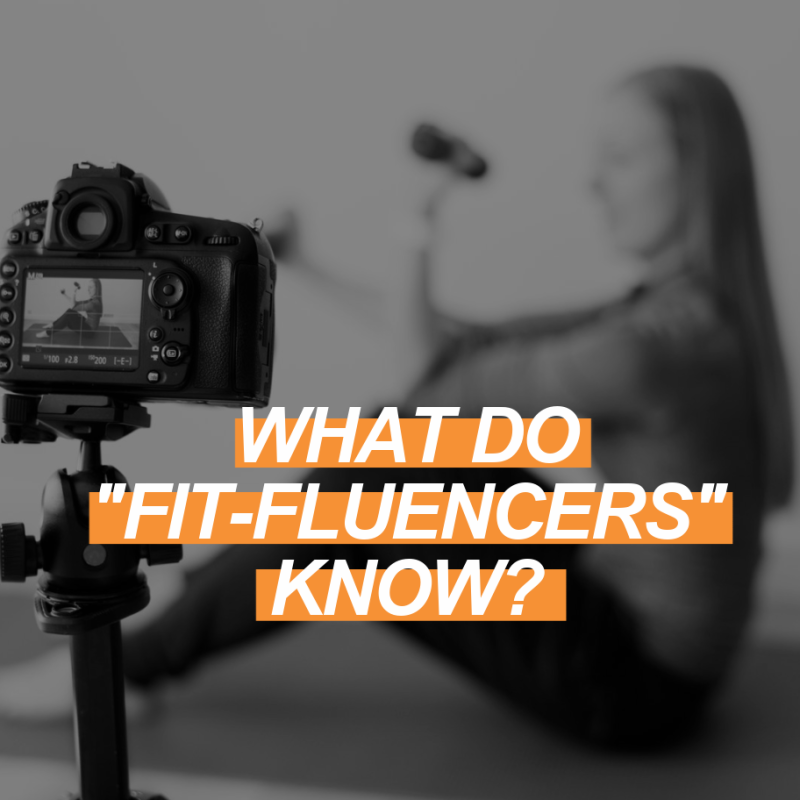
Oh, the world of social media. There’s great content out there, but there’s also a lot of flabby science and quackery. Mostly, it’s promoted by “fit-fluencers” who simply have a lot of followers and little (accurate) knowledge about science.
An example. I was scrolling through my social media feed and saw some random (uncredentialed) bikini-clad individual say, “If weight loss is your goal, you need to commit at least 60 minutes of cardio a day.” Umm. No. Not true. Not even close. Here’s the thing about fit-fluencers that achieved their level of popularity based on their photo and video content alone doling out exercise programming advice —the lack of credentials and experience aside, they do not understand the science (or art) of workout programming practices like qualified personal trainers do.
Here are the most common workout programming standards these Insta-trainers overlook (because, again, they don’t know what they’re doing and not doing).
What Fit-Fluencers Don’t Get
- The basics still work. Before we work to strengthen a client’s body, we need to evaluate how they move in basic movement patterns (bend and lift, single-leg, pushing, pulling, and rotational movements). If clients are unable to effectively perform these movement patterns, functionality should be restored before the body is loaded and asked to perform at a higher level within the context of more complex movements.
- Simple over complex. A great workout or training regimen need not be complicated. There’s no need to pull out every piece of equipment or weighted implement to “tone” (this is a word fit-fluencers use all the time that’s not actually a thing) muscles. A set of dumbbells, resistance bands, and a cordless jump rope can work beautifully (when the professional knows what they are doing).
- Time efficiency. Revisiting my example above – “commit at least 60 minutes of cardio a day”. Honestly, what client has that amount of time (which isn’t necessary for physical gains or fat loss) do devote to just cardio. None that I train. Prioritize a client’s window of time and work within that time frame.
- Bodyweight is great. Yes, progressive overload requires that we introduce a greater stimulus than the muscular system is accustomed to. But this doesn’t mean that bodyweight isn’t a) an effective or useful source of resistance or b) doesn’t have a place in a well-rounded program. Great HIIT workouts can be bodyweight-based – no dumbbells required. Some Insta-trainers love to espouse the notion that the only way to accomplish a good workout is by adding a significant amount of weight.
- Not all clients want to be a bodybuilder or bikini model. Each client has a specific goal, and any workout program should be related to that goal to help the client achieve it. There is no one-size-fits-all approach and if that’s how a trainer approaches workout design, they aren’t credentialed (most likely). Most influencers are selling an image (an unrealistic ideal connected to whatever the socially prescribed standard of the decade is) and not a quality, functional, and goal-driven product.
- Promoting movement in all planes of motion. A quality program (and professional) encourages 3-D movement by including exercises that occur in the frontal, sagittal, and transverse planes. The human body moves front-to-back, laterally, and rotationally.
- Flexibility/mobility is often overlooked. Joint health and flexibility are rarely fitness components in fit-fluencers’ advertised programs. Dynamic warm-up or movement prep should occur at the beginning of a workout and static stretching/cool-down exercises should occur at the end. It isn’t all about the lift. To lift effectively, the joints need to move through an optimal range of motion; flexibility exercises improve a joint’s range of motion.
- It’s not about the calories. A high caloric burn can feel amazing. But is that the entire point of a workout session? Not really. It should be about client goals, as well as functional movement development, and joy. Further, fit-fluencers and Insta-trainers claim a high caloric burn in resistance training, which we know isn’t the most metabolically demanding form of exercise. So, no, Insta-trainers, the average individual will not burn 450 calories in a 20-minute upper body resistance training routine with light dumbbells.
As credentialed exercise professionals, we are often fighting what has become the mainstream social media trainer with 200,000+ followers. To be fair, there are certainly popular fitness profiles out there led by knowledgeable professionals. They are the ones demonstrating and backing up their knowledge with references, and usually don’t focus on their apparel or lack thereof. But the bulk of your fitness hashtag feed will likely be littered with accounts seeking more followers, not aiming to truly help others like you are. Keep fighting the good fight, you have quality education, credentials, and science on your side. All of which get your clients results (something that rarely happens with the quacks).






